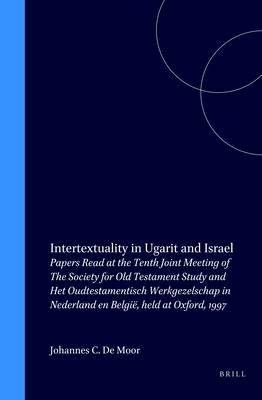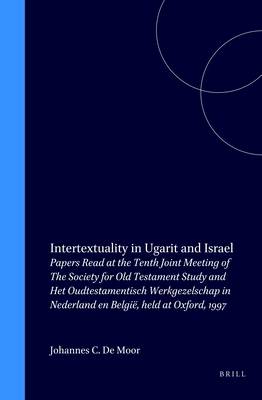
- Afhalen na 1 uur in een winkel met voorraad
- Gratis thuislevering in België vanaf € 30
- Ruim aanbod met 7 miljoen producten
- Afhalen na 1 uur in een winkel met voorraad
- Gratis thuislevering in België vanaf € 30
- Ruim aanbod met 7 miljoen producten
Zoeken
Intertextuality in Ugarit and Israel
€ 264,45
+ 528 punten
Omschrijving
In modern literary studies intertextuality is at the centre of interest. Although the relationship between texts has always been an important aspect of Old Testament studies, especially in literary criticism, the scale of comparison has broadened, including for example the interrelationships between the First, Second and Third Isaiah, or the whole Book of the Twelve. These relatively new approaches raise a number of methodical questions which were addressed at the Tenth Joint Meeting of the British Society for Old Testament Study and the Dutch 'Oudtestamentisch Werkgezelschap', held at Oxford, 22nd to 25th July 1997. Did the ancient authors have a well-defined concept of a book? How did they relate to the literary work of their predecessors and contemporaries? Can we trace the theological motifs behind their use of other literary compositions? What does an ancient version reveal about the way it interpreted its source text?
One of the problems confronting biblical scholars in this kind of research is the lack of controllable models. Therefore it is useful to study the work of the Ugaritic chief priest Ilimilku whose three major literary compositions provide us with a unique possibility to monitor intertextual relationships in the work of one and the same ancient author. Ugaritic and other ancient Near Eastern parallels help us to understand how the Priestly writer re-interpreted the Yahwistic account of the creation of mankind. Apparently intertextuality in Israel is a phenomenon which cannot properly be understood without taking other literature from the ancient world into account.
One of the problems confronting biblical scholars in this kind of research is the lack of controllable models. Therefore it is useful to study the work of the Ugaritic chief priest Ilimilku whose three major literary compositions provide us with a unique possibility to monitor intertextual relationships in the work of one and the same ancient author. Ugaritic and other ancient Near Eastern parallels help us to understand how the Priestly writer re-interpreted the Yahwistic account of the creation of mankind. Apparently intertextuality in Israel is a phenomenon which cannot properly be understood without taking other literature from the ancient world into account.
Specificaties
Betrokkenen
- Uitgeverij:
Inhoud
- Aantal bladzijden:
- 232
- Taal:
- Engels
- Reeks:
- Reeksnummer:
- nr. 40
Eigenschappen
- Productcode (EAN):
- 9789004111547
- Verschijningsdatum:
- 20/03/1998
- Uitvoering:
- Hardcover
- Formaat:
- Genaaid
- Afmetingen:
- 166 mm x 245 mm
- Gewicht:
- 562 g

Alleen bij Standaard Boekhandel
+ 528 punten op je klantenkaart van Standaard Boekhandel
Beoordelingen
We publiceren alleen reviews die voldoen aan de voorwaarden voor reviews. Bekijk onze voorwaarden voor reviews.







